Marine Engine Room Fire Protection Systems - Fire Hazards and Causes of Fire
Fire hazards in the engine room
The engine room of a seagoing ship is a very fire prone area. It houses about 130 different types of machinery with their associated risks. It also houses numerous tanks of heated fuel oils, lubricating oils, diesel oil, greases, and chemicals, etc. An average size ship consumes about 40 tons of fuel oil in a day; the same amount is pumped from the double bottom tanks, and is heated, filtered, allowed to sediment, purified, clarified, conditioned, reheated, and sent to the main engine for combustion. Heated fuel oils range in temperature as high as 120 to 150 degrees Celsius. It runs in kilometers of piping and often at a pressure as high as 1200 bars (in high pressure pipes during injection for a short length).
The engine room houses machines like steam boilers used for the production of steam for heating fuel oil, accommodation, and cargoes, where fuel is burnt inside in a furnace in controlled combustion. Incinerator wastes like oily rags, sludge, and other operational wastes are burnt at a temperature of 850 degrees C and above. Thus all these types of machines with their devices and piping can cause a fire hazard if not properly maintained, or if there is an automation failure, fatigue of material, or vibration failure. A fire in the engine room, unless restricted in the initial stages often goes out of control, causing many times the loss of the ship and life. Thus it is imperative that the machineries and the fire detection and firefighting systems are maintained in efficient condition.
Fire Triangle
The causes of fire in engine room
Fire results from the combining of three factors:
1. A combustible substance.
2. A source of ignition.
3. A supply of air.
These three factors are said to be the three sides of the fire triangle_._ Removing any one or more of these sides will break the triangle and result in the fire being put out. The complete absence of any one of the three will ensure that a fire never starts.
The first side of the triangle, the substance that can burn, is in abundance in engine room- tanks of oil, pipes full of oil, oily rags, etc. This side can be removed by good housekeeping in the engine room, efficient garbage management, good maintenance of pipes, flanges, gaskets, and machines, etc.
The second side of the triangle, air, is also in abundance as huge engine room blowers pump air into the engine room for ventilation, cooling, and for combustion in the main and auxiliary engines, boilers, and incinerators.
The third side of the fire triangle is the ignition source, which can also be present sometimes due to failure of material or insulation, or due to human error. Lots of hot work is done in the engine room, like gas-cutting and electric arc welding. Hot work done without a valid hot work permit and without the attendance of a senior engineer is inviting trouble. The engineers must make sure that high temperature area like exhaust manifolds are insulated and that the insulation is in good condition. Frequent fires have been caused by fuel spilling from a leaking pipeline on to a hot surface and catching fire. Naked flames like butane lighters and cigarettes should be avoided in the engine room because of the presence of oil vapors. Smoking should only be done in designated areas like the engine control room, which is the certified smoking area. Also ill-maintained machines can cause hot spots and lead to subsequent fires. A badly maintained main engine can have a crankcase explosion and scavenge fire which can lead to a total engine room fire.
Next: Fire detection and extinguishing systems in the engine room
Fire detection systems
The engine room employs fire detection systems which have a master control panel on the bridge with auxiliary panels in the engine control room and the fire control station. The system consists of different types of fire detectors located at various places as per the risk of the type of fire. There are three phenomena associated with a fire: smoke, flames, and heat. These are employed for the detection purposes. There are three type of detectors used in engine room, which are infrared flame detectors, smoke detectors, and heat detectors. We cannot go into the details of the different types of the fire detectors as it is outside the scope of this article, however, the placement of the fire detectors is as follows:
- In work shop where there is always welding works going on and smoke and naked flame are always present, a heat detector would be placed or none at all as it is a certified hot work area.
- In engine control room smoke detectors are used.
- Near boilers and incinerators where abnormal conditions can produce a naked flame, an infrared flame and an ionization type smoke detector is used.
- Generally smoke detectors are used throughout the engine room. The flame detectors are used near fuel handling units like purifiers, hot filters, refiners, conditioners.
Upon the detection of a fire, an audible alarm is sounded throughout the ship, with the control panel and alarm systems showing the location of the fire. If two types of fire detectors, i.e. flame and smoke, are simultaneously triggered they would activate the Hyper-Mist system in that zone automatically.
Fire Detectors
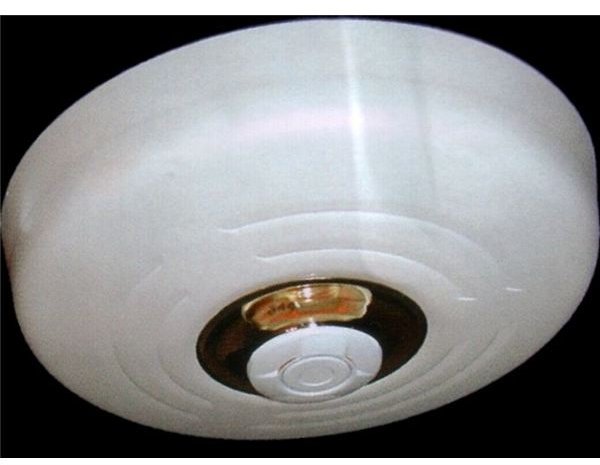
Fire extinguishing systems in the engine room
Due to the inherent fire risks the engine room employs a wide variety of firefighting equipment and systems. We shall discuss them one by one.
Fire main: Water is the chief firefighting medium on a ship. A fixed pipeline running throughout the ship with hydrants at suitable points to cover all the areas is known as the fire main. The fire main is fed by big fire pumps sized by regulations. There must be at least two fire pumps and an emergency fire pump in a cargo ship. The emergency fire pump must be at a remote location from the engine room on the ship. Isolating valves to isolate sections of the pipe line in the event of pipe failure are located in accessible places and clearly marked. Fire hoses and nozzles are kept coiled and ready near the hydrants. Monthly checking of these is done by the fire safety officer.
Fire extinguishers: Different types of fire extinguishers, located as per the requirement, are kept in the engine room. Commonly used are carbon dioxide, DCP or dry chemical powder, and foam extinguishers. In engine control room where there are electrical and electronic components carbon dioxide is located. Near fuel handling appliances DCP or foam is generally kept. The extinguishers are to be regularly inspected and maintained by the fire safety officer.
Sprinkler
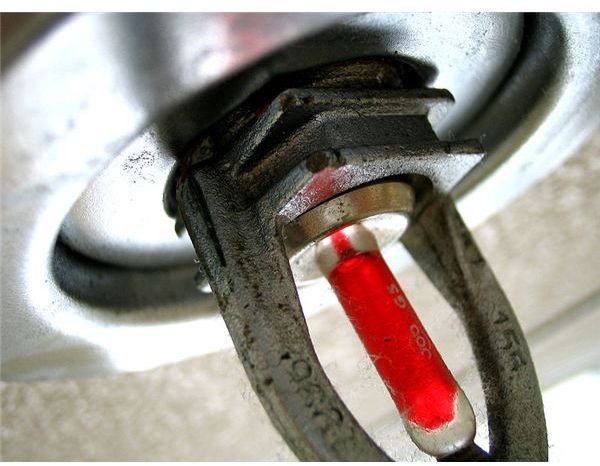
Next: More about fire extinguishing systems in the engine room and fire controlling systems like quick-closing valves and emergency stops
Fire extinguishing systems in engine room (continued)
Portable foam applicator: This too is located near the boiler flat. It consists of a jerry can containing foam compound called AFFF or aqueous film-forming foam compound, a foam applicator nozzle, and a hose for connecting to the fire main.
Sand: It is kept near the boiler in a sand box and is a basic medium for fighting minor fires. It is also useful in fighting metal fires.
Hyper-Mist systems: These are very high pressure water mist systems. On operation it creates a water fog which effectively puts out the fire while also providing a quenching or cooling effect. It is also automatically activated when two different types of fire detectors are triggered in the same fire zone. It can also be operated remotely. All new ships have this, and the systems are very effective.
Fixed flooding firefighting systems: Outside the engine room there is a dedicated CO2 room where carbon dioxide is stored under high pressure in bottles or under refrigeration in liquefied state in bulk. The number of bottles required is divided into banks for each space covered, like engine room and different cargo holds. The amount of CO2 required for each space is pre-calculated on the basis of the volume of the compartment, and a bulk CO2 bottle may contain about 20 tons of liquefied CO2. The CO2 is released in the emergency situation of a fire out of control, after evacuation of the engine room, by Chief Engineer on the order of the Master of the ship. CO2 under high pressure travels through fixed pipe lines into the engine room and displaces oxygen quickly extinguishing the fire. However before CO2 is released it must be ensured that all doors, fire dampers, and openings are shut down to prevent the gas from escaping. CO2 is a once-through system that, if not correctly used, could lead to re-ignition and the loss of the ship.
Fire Extinguisher
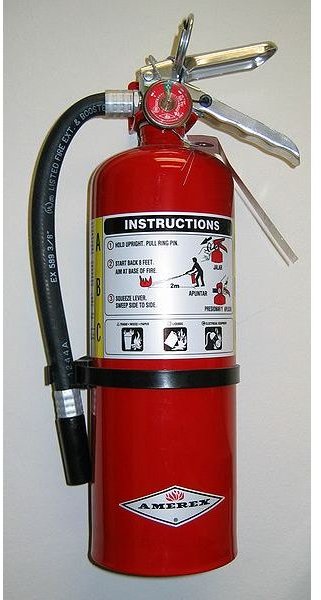
Fire controlling systems
Large quantities of oil are circulated in the engine room, and a number of oil tanks are also located there. In the event of a fire, the fuel to the fire is to be cut off. This is achieved by operating the quick closing valves and the emergency stops. The emergency stop is a “break glass and push” button located outside the engine room. It is to be operated in the event of a fire and it will shut down all blowers, fuel transfer pumps, purifiers, incinerators, and boilers.
The quick closing valves are remotely operated hydraulically or pneumatically actuated valves in the outlet pipes of the fuel storage tanks. When operated it stops the flow of oil from the tanks and, in many cases, drains the oil from the storage tanks to the double bottom tanks.
Next: Emergency preparedness, Saturday fire draining drills, firefighting gear, and emergency escapes
Emergency preparedness
The shipping company must ensure that the ships personnel are well prepared for a forthcoming emergency. This is called emergency preparedness as per ISM code element 8. The International Safety Management Code is the marine counterpart of ISO series used on land for quality management. All seagoing ships have to abide by the rules. The fire training drills are carried out every Saturday on all ships around the globe. The Saturday routines are also done which involve the routine inspection and testing of all firefighting and other safety equipment. The entire complement is divided into the following groups:
Command squad: It consists of the Captain and third officer. They are overall in charge and coordinate and communicate with the shore authorities and guide the firefighting team.
Roving squad: It consists of the Chief Engineer, electrical officer, and fitter. They are in charge of releasing the carbon dioxide and isolating electrical connections, etc.
Emergency squad: There are two emergency squads. The Emergency squad 1 consists of the Chief Officer and his team. The Emergency squad 2 consists of the Second Engineer and his team. In case of an engine room fire, the emergency squad 2 fights the fire and the emergency squad 1 acts as the backup team. In the case of a deck fire it is vice versa.
Support squad: It consists of the Second Officer, Chief cook, and their team. They lower the life boat, prepare for abandoning the ship, support the emergency teams, and provide boundary cooling.
Other aids for firefighting and evacuation
To aid the fighting of fire on every ship, there are fireman’s gear and CABA sets. The fireman’s outfits are heat-resistant suits worn to approach the seat of the fire to extinguish it. CABA stands for compressed air breathing apparatus; they are worn in conjunction with the fireman’s outfit and provide compressed air for breathing. They are also used in the evacuation of personnel from toxic enclosed spaces. Another device is called EEBD, which means emergency escape breathing device. It is a portable breathing device containing about 15 minutes of air supply. It is used primarily for escape from engine room in the event of gas leak or carbon dioxide release.
CABA
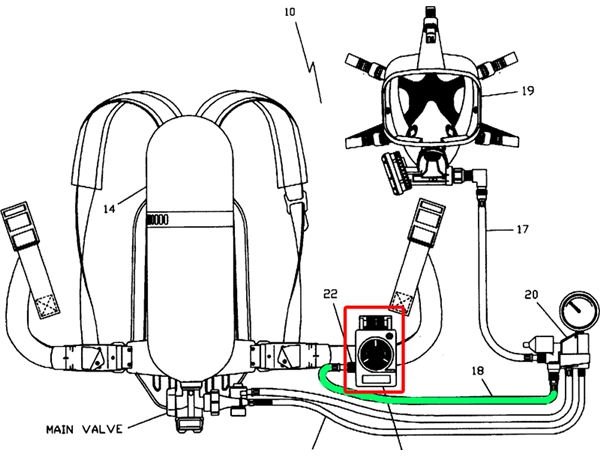
Emergency fire escapes
Every engine room has one or more emergency escape to aid in the speedy evacuation of the personnel in the case of a fire. It is an enclosed passage to shield personnel from the fire, and opening to the main deck or other safe place. It also has EEBD kept inside for usage, as well as a pulley and rope system to evacuate injured or unconscious personnel.
Next: Preventing re-ignition, re-entry procedures, and our conclusion
Prevent re-ignition: boundary cooling and fire patrols
During a fire and after carbon dioxide has been released in the engine room, the outside bulkheads and the boundaries of the fire spaces must be cooled by sea water sprays. As Carbon dioxide has little cooling effect, the water will remove the heat and prevent re-ignition. Also it would prevent the spread of fire to adjacent compartments. Fire patrols must be continuously kept to monitor the spread of fire, both before and after reentry.
Fire
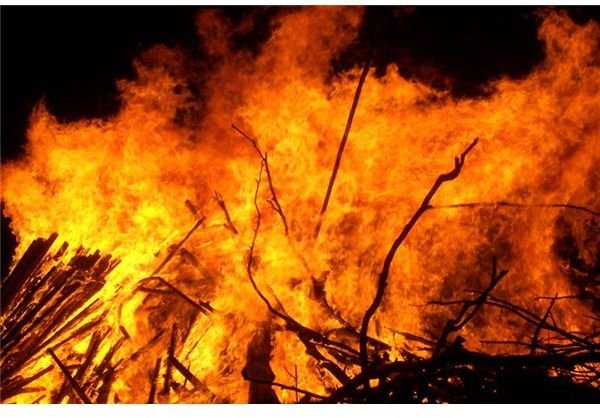
Re-entry procedures
After the fire has been assumed to be extinguished and before removing the carbon di-oxide by exhaust blowers, a re-entry using breathing apparatus and fireman’s outfit has to be done. Re-entry is usually done from the lowest space in the engine room and probably from the emergency escape. Care is to be taken not to allow the carbon dioxide to escape. The entering personnel must enter with a fire hose and extinguish any local spots of fire. If confirmed that the fire is out then the exhaust blowers can be run and the gases removed. However fire patrols must be kept for a long period after the fire until the engine room is manned again.
Conclusion
Thus the firefighting is a separate branch of engineering. All seafarers, before coming to the sea, have to undergo basic and advanced firefighting courses, and learn how most practically to fight the fire. Fire is a constant risk at sea and the worst thing to happen in your sea carrier. The best option is to fight the fire and stay on board, because if you abandon the ship then you are at the mercy of nature. And even if you have escaped the fire, dehydration, hypothermia, or starvation may take you. Thus all sea going personnel should always be at their heels to identify any potential fire risk. In this article I have tried in brief to introduce the reader to the basics of fire engineering in a marine engineer’s life at sea. I hope that this will give an idea to the people about the risks at sea and in the engine room and they would consciously try to look after their own safety as well as the safety of their fellow seamen.
References
Marine Auxiliary: H.D. Mc George
Marine Engineering: Roy Harrington
Fire Fighting Equipment and its use in Ship: G. Victory ,CEng and I. H. Owen, CEng
Image Credits
Fire Triangle, Heat Detector, Sprinkler, Fire Extinguisher, CABA, Fire: Wikimedia Commons
